Combal Zero is set in a wing of Rivoli’s castle, which is so old that its original date of building is unclear, but was probably in the 10th century.. Combal Zero currently has a single star in the Michelin guide, though for several years it held two, losing the second star in the 2016 guide. Combal Zero is known for the ultra-modern cuisine of Davide Scabin, who opened the restaurant in 1994, originally just called Combal, in Turin. In 2000 it moved here and became “Combal.Zero”.
To get to the restaurant, you walk through a vast stone arch and then turn to the right, then walk up a flight of large stone steps. The dining room itself is attractive, modern and well-lit, with wood floor and well-spaced tables. We went with the signature "upside down" menu (€200), an idea of the chef whereby the dishes, other than dessert, are essentially served in the opposite sequence from usual: the meat dish first, then fish, the ending with a vegetable dish and a salad. I suppose this is quite innovative in that I have not seen it tried elsewhere, and it is not as disconcerting to the palate as you might imagine.
The wine list had labels such as Marziano Abbona Garombello 2015 at €30 for a bottle that you can find in the high street for €13, Querciabella Batar 2007 at a very fair €85 compared to its retail price of €84, and the lovely JJ Prum Spatlese Wehlener Sonnenuhr at €110 for a bottle that will set you back €40 in the shops. There were prestige labels too, with Gaja Sori Tildin 2001t at €420 for a wine whose current market price is €294.
Preceding the menu was a nibble eaten in the bar, a "soup pizza", which had mozzarella milk as the stock of the soup, and involved a bread crust, oven-stewed tomatoes, oregano, bass oil and anchovies. It did actually taste like pizza, which was interesting, but the question is: would you rather just have a nice pizza? It was an interesting idea (13/20) but as with many modernist deconstruction dishes you do wonder what has been gained other than the innovation itself. This was followed by four little cubes, two pink and two green. The pink ones were bread flavoured with beetroot vinegar, the other made from fried courgette. This was pleasant enough but the vinegar was too strong, and I normally like sour dishes. The dish had a backstory, as modernist dishes so often do, about the taste profile differing if you eat the green one first rather than the pink, or vice versa, but to be honest this all rather eluded me, as it did with two other experienced diners that I discussed it with (13/20).
The proper began, in “upside down“ style, with pigeon maraichere. Both breast and leg were served, along with garden vegetables and a snail ("what do you find in gardens? - snails"). The snail was local and was fine, the pigeon nicely cooked, served with a sauce meunière, something more usually associated with fish. To be honest I would have preferred a demi-glacé, and this seemed to be another example of innovation for the sake of it rather than something that really improves flavour. Still, it was a capably cooked dish (15/20). The best dish of the meal at this point was veal kidney, which had been slow cooked at a low temperature, served with cucumber, red onion and a sauce of champagne and gin. This sounds an odd combination but it worked very well, and the kidney itself was tender and had good flavour (16/20).
Next was ravioli of buffalo ricotta, with turnip tops, capers, lemon, trout roe, fruit and a coffee emulsion. The pasta was fine but the coffee flavour was much too dominant, and was the main taste that came through (12/20). An extra course we had requested was macaroni soufflé made with deliberately overcooked pasta, bolognese sauce and a fondue using Grana Padano cheese. This was very enjoyable, and demonstrated that the kitchen could do a good job of a fairly classical dish if it put its mind to it (15/20).
By contrast, the next dish was a disaster. Squid was poised over a glass in which was a block of spaghetti coloured with squid ink. Dashi was poured over this, supposedly to melt it. Unfortunately it didn't really, and the "wasabi" turned out to be the coloured horseradish from a tube rather than real grated wasabi root. Bear in mind this is a high-end restaurant, not some little local sushi bar trying to save a bit of money by not using proper wasabi. Would they substitute "truffle oil" (which is actually a chemical) for real white truffles in a dish? I think not, yet they are happy to squeeze some paste out of a tube and claim it is wasabi, when it is not. The piece of squid was OK but this was just a bad dish in my view. Why play around with Asian flavours in Italy, especially if you are not going to do things properly? (8/20).
Aubergine tart came with clams. My dining companions generally liked this, but I found it to be over salted, and the clams seemed pretty dull (13/20). Next was a dish seemingly inspired by the shoe designer Louboutin, noted for his red soles. Here a pepper and anchovy base with parsley and vinegar was spread out on the plate with a couple of pieces of fried bread, used to mop up the base. This was pleasant, but take away the Louboutin backstory and you have a bit of fried bread with a pepper spread that was rather too salty, even to my taste (12/20). Tempura of shiitake mushrooms, herbs and buffalo milk came with Stichelton cheese sprayed on using some piece of modern kitchen equipment. I do not think the spray cheese was a great idea, though the tempura was light enough (13/20).
Raw scallop came with a ganache of foie gras, peach, squid ink and olive oil. The scallop was fine albeit overly fridge cold, though I am less sure about the wisdom some of the garnishes (14/20). The savoury section of the meal concluded with a salad of frozen oyster with hose water and herbs, along with sesame oil and a hint of ginger. I didn't think this combination worked well, and did not enjoy the oyster much either (11/20). I had asked the chef at the start of the meal if he could make one more classical dish, and we were now served Fassone beef in breadcrumbs with rosemary and sage crust, mayonaisse and a chicken and veal broth with thyme. This was a delight, the tender beef nicely lifted by the herb flavours (17/20). Why, oh why, can he not cook more dishes like this that are a real pleasure to eat, rather than obsessing over the latest molecular innovation?
Dessert was a doughnut made with overcooked spaghetti dough and a custard filling. To be honest it was not great, the doughnut soggy (barely 12/20). There was then mineral water poured over a dish of grapefruit, pineapple and kiwi fruit, which came with miniature meringues, tonic jelly, coconut and an egg yolk slow cooked and marinated in sugar, with vanilla cream added. This dish was a mess, with the egg yolk wildly sweet, and too many clashing flavours (11/20).
Finally there was a chocolate ganache made using chocolate from Guyana, served with honey, coffee and edible flowers. This was fine except for the flowers, which added nothing except an odd texture (13/20). I was being treated to this meal by a friend so I did not see the bill, but if you shared a modest bottle of wine it would cost perhaps £210 all in. Service was excellent but overall this was a frustrating meal. The extra dishes that we ordered show that the chef can undoubtedly cook, but he chooses instead to spend his time on dishes that may be technically elaborate, but do not always even work (the non-melting block of pasta being just on example). A pity.
Book
























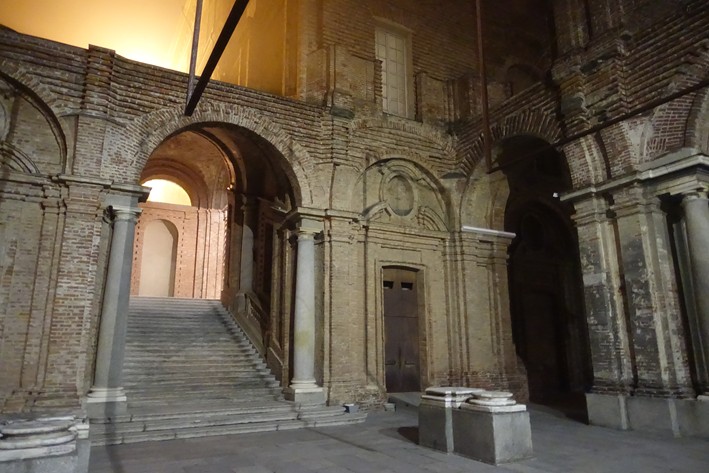

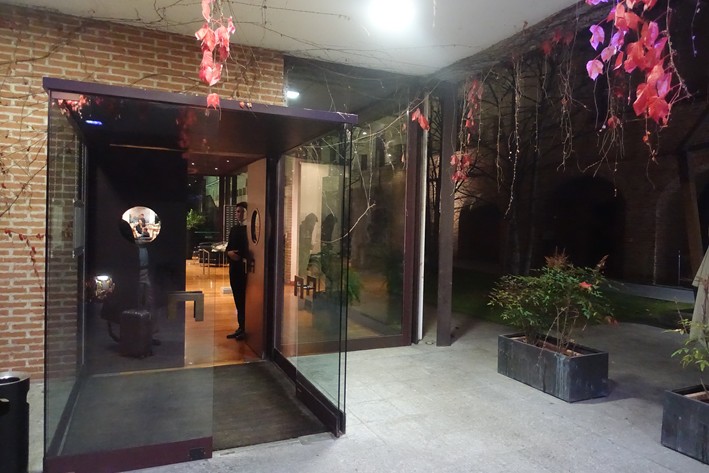
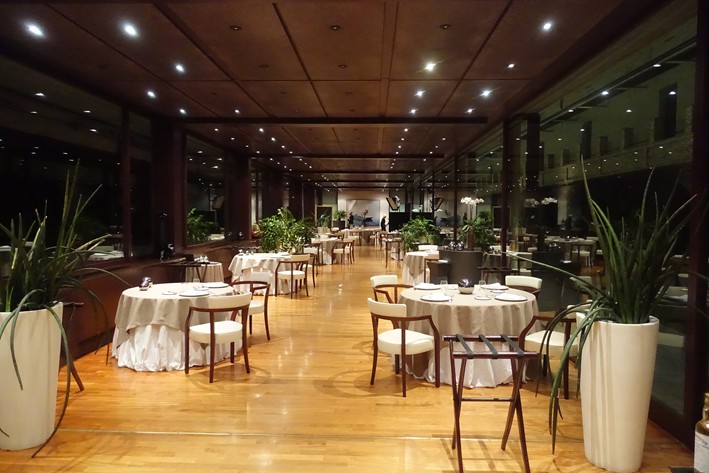

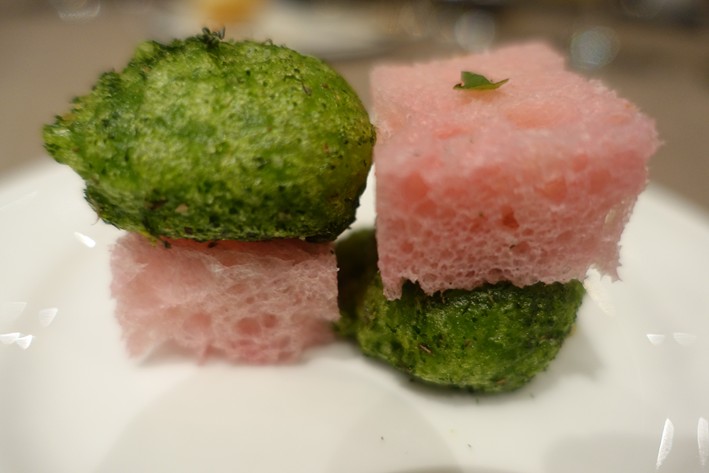
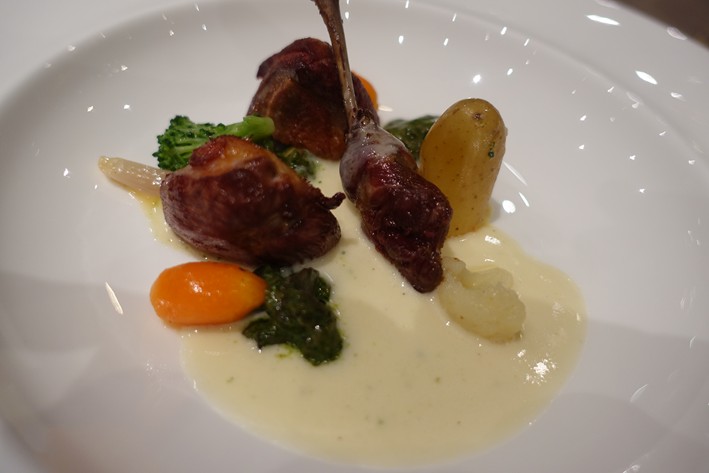
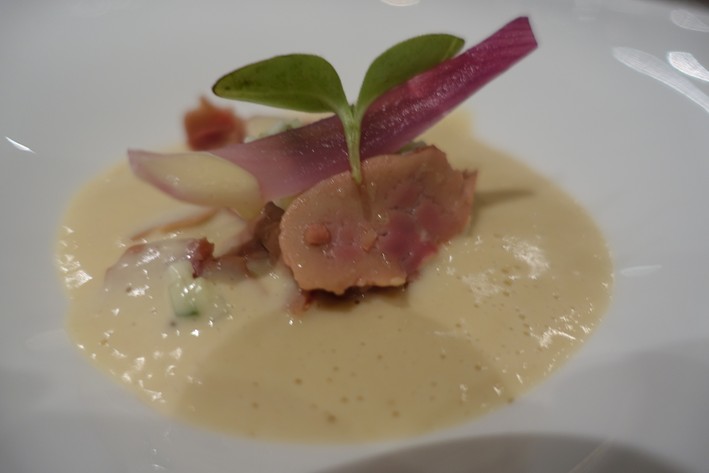
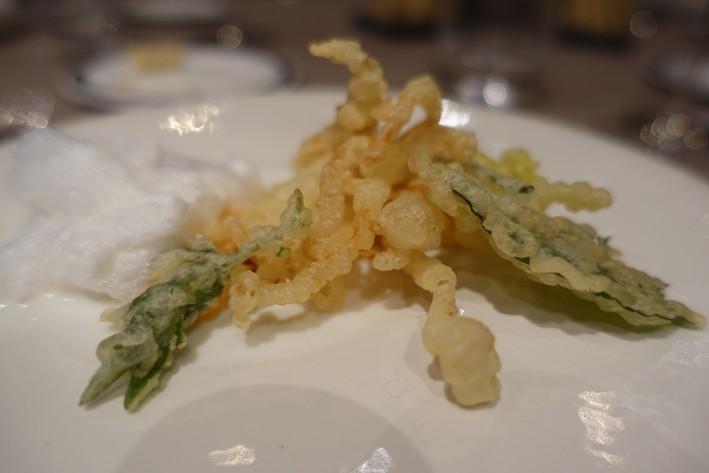
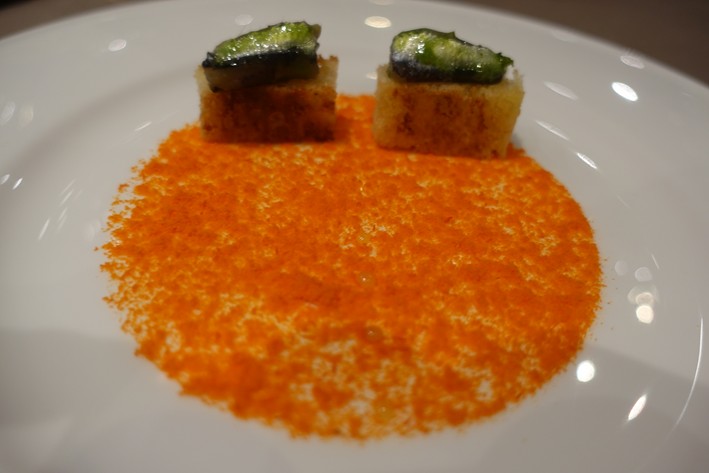
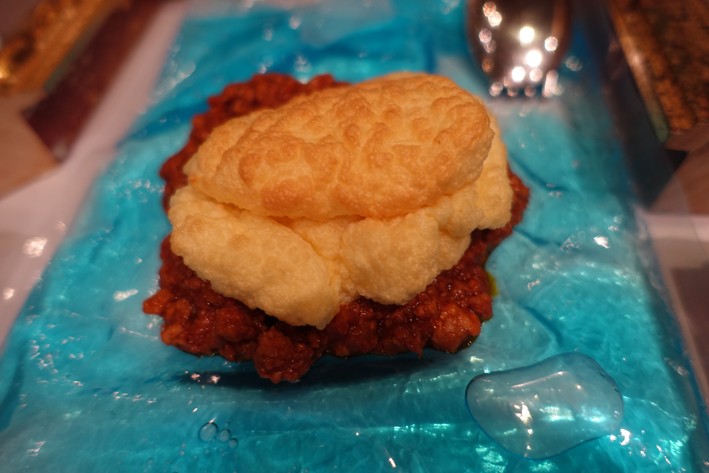
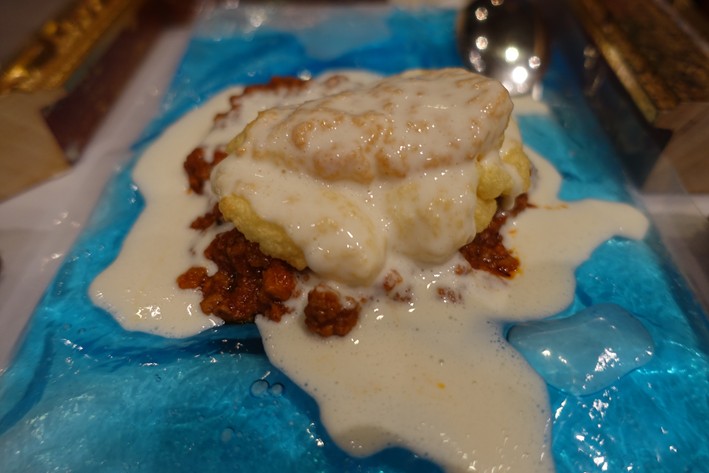
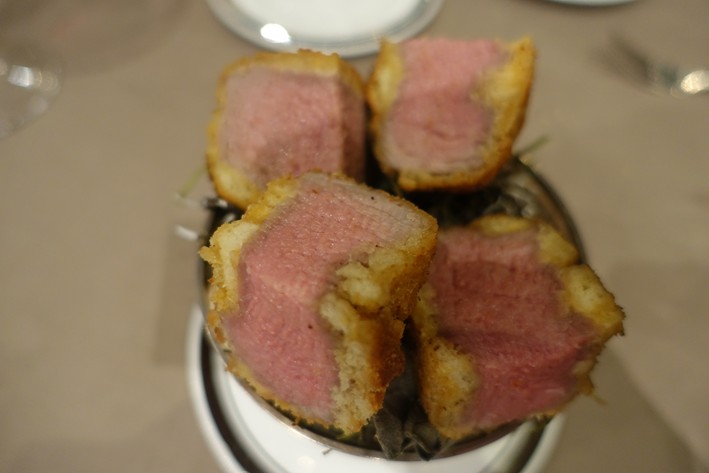
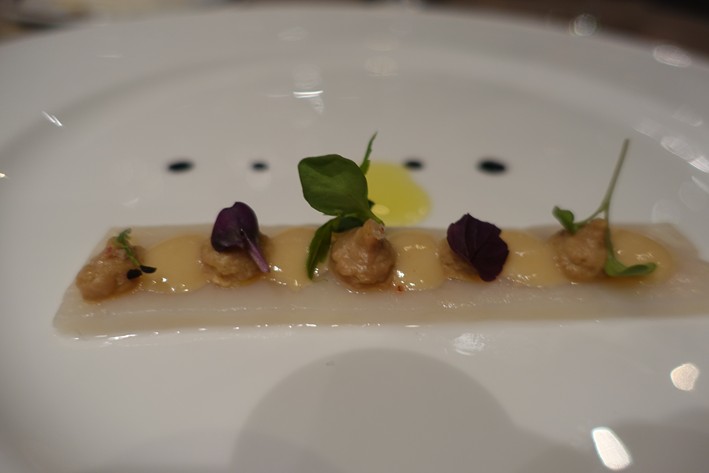
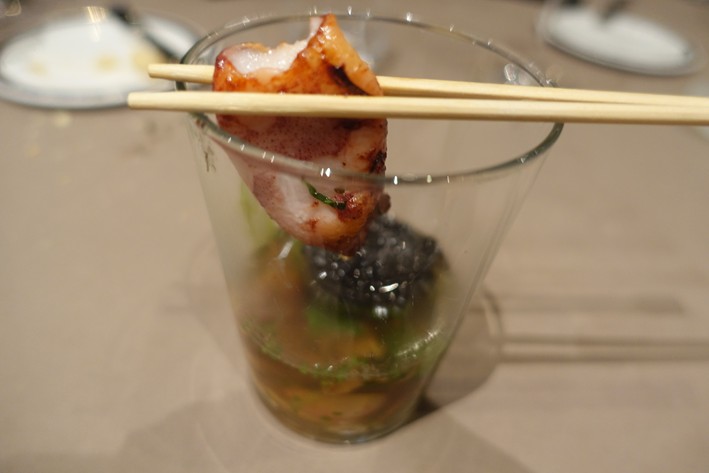
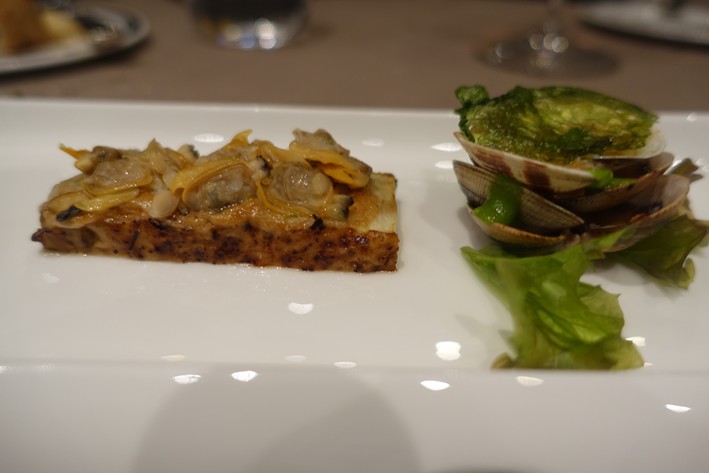
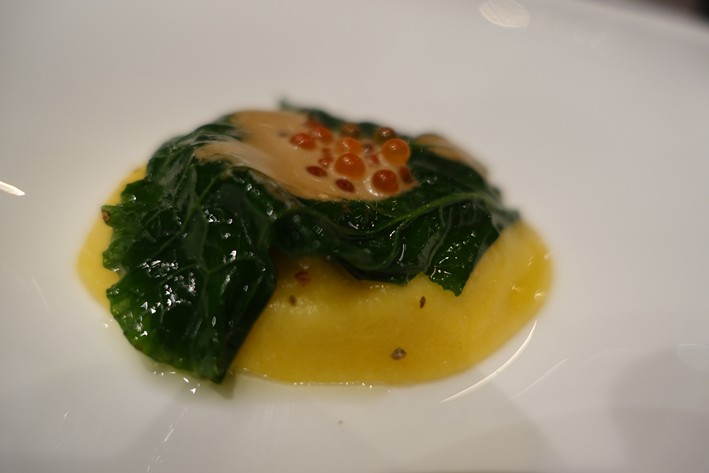
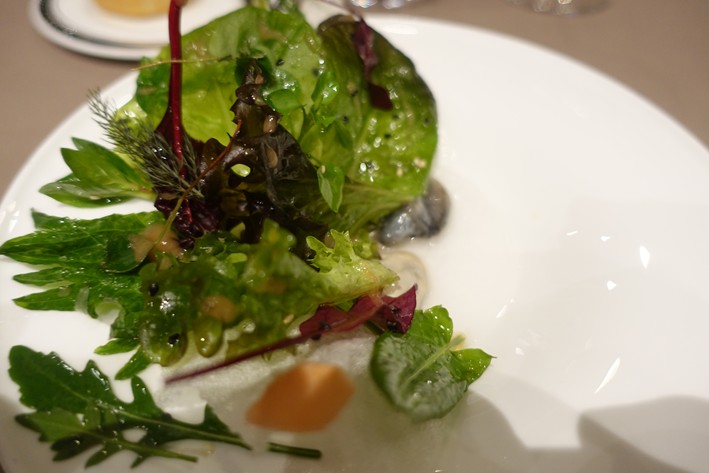
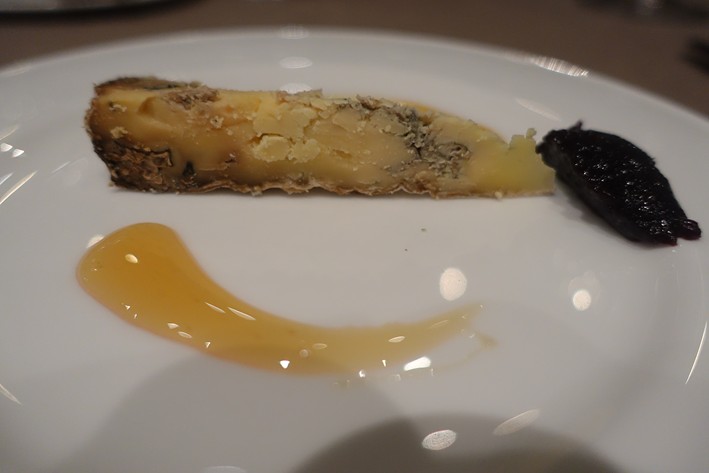


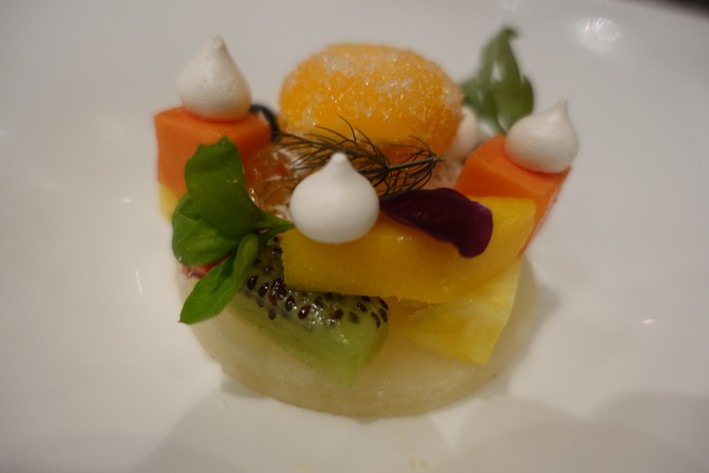

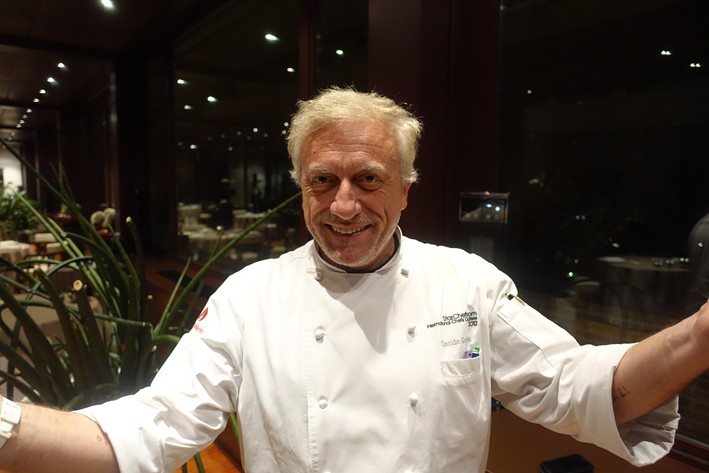

Jeffrey Merrihue
This dinner - without the various asian experiments would have been quite good indeed...alas...asian fusion is pushing into most world cuisines like an un-invited bully.